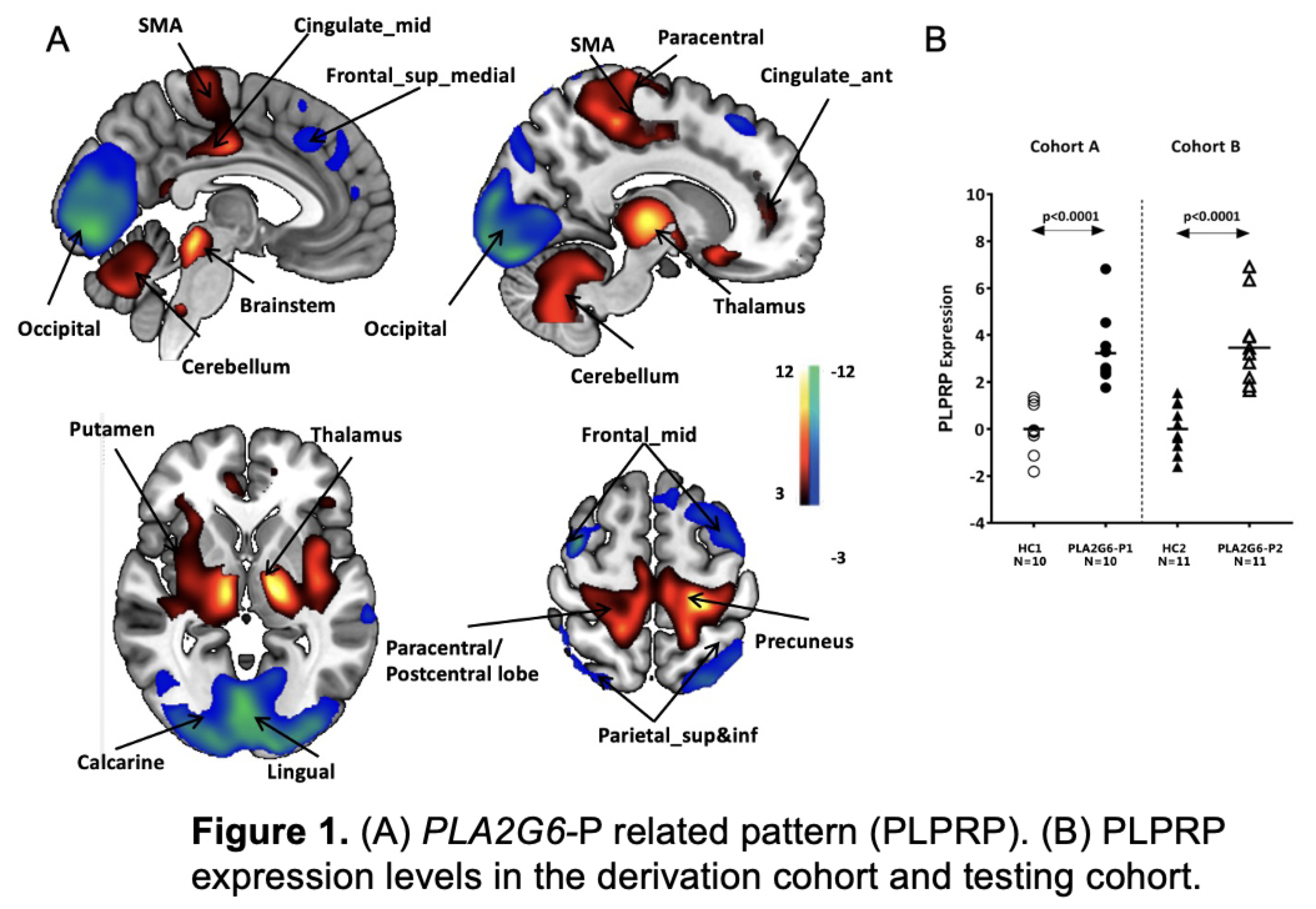Category: Parkinson's Disease: Neuroimaging
Objective: To characterize the cerebral metabolic network in PLA2G6-associated parkinsonism (PLA2G6-P).
Background: PLA2G6-associated neurodegeneration is known as a continuum of phenotypes. Patients with late-onset PLA2G6-associated neurodegeneration commonly manifest with complex parkinsonism. Patients with PLA2G6-associated parkinsonism can combine with dystonia, ataxia, cognitive and psychiatric impairment, and pyramidal signs, leading to misdiagnosis and delayed diagnosis. The pathophysiological processes contributing to the development of PLA2G6-P remain largely elusive.
Method: 18F-fluorodeoxyglucose (FDG) positron emission tomography (PET) was performed in 19 patients with PLA2G6-P and 21 healthy control subjects to identify and validate the disease-related pattern. The derivation cohort (Cohort A) comprised 10 randomly selected healthy controls (32.0±5.1 years old) and 10 patients with PLA2G6-P (31.5±4.3 years old), while the testing cohort (Cohort B) comprised the remaining 11 healthy controls (31.1±4.5 years old) and 11 PLA2G6-P patients (31.0±2.4 years old) including 9 remaining PLA2G6-P patients and two PLA2G6-P patients from the derivation cohort who received PET scans again during follow-up.
Results: We identified a significant PLA2G6-P related pattern (PLPRP) from the derivation cohort (Cohort A), which was characterized by increased metabolism in putamen, thalamus, brainstem, cerebellum, precuneus, paracentral and postcentral gyrus, anterior and middle cingulate, and supplementary motor area, and with decreased metabolism in occipital lobe, lingual gyrus (Figure 1A). The network expression of PLPRP was significantly elevated (p < 0.0001) in PLA2G6-P compared to controls in the derivation cohort (Cohort A) and was validated in the testing cohort (Cohort B) (p< 0.0001) (Figure 1B). Compared to the Parkinson’s disease related pattern (PDRP), the PLA2G6-P was characterized by relatively increased metabolic activity in the pons, thalamus, brainstem, putamen, cingulate, supplementary motor area, frontal and relatively decreased in occipital and cerebellum (p < 0.001, uncorrected).
Conclusion: Abnormal brain activity among the motor cortex, basal ganglia, thalamus, brainstem and cerebellum was found in PLA2G6-P. The characteristic pattern represents a promising step in understanding the neural circuit of PLA2G6-associated parkinsonism, and can offer important hints to the clinical diagnosis.
Figure 1
To cite this abstract in AMA style:
XY. Zhou, J. Wang, C. Chen, FT. Liu, CT. Zuo, JJ. Wu, YM. Sun, J. Wang. Cerebral metabolic network in PLA2G6-associated parkinsonism [abstract]. Mov Disord. 2024; 39 (suppl 1). https://www.mdsabstracts.org/abstract/cerebral-metabolic-network-in-pla2g6-associated-parkinsonism/. Accessed December 13, 2025.« Back to 2024 International Congress
MDS Abstracts - https://www.mdsabstracts.org/abstract/cerebral-metabolic-network-in-pla2g6-associated-parkinsonism/

